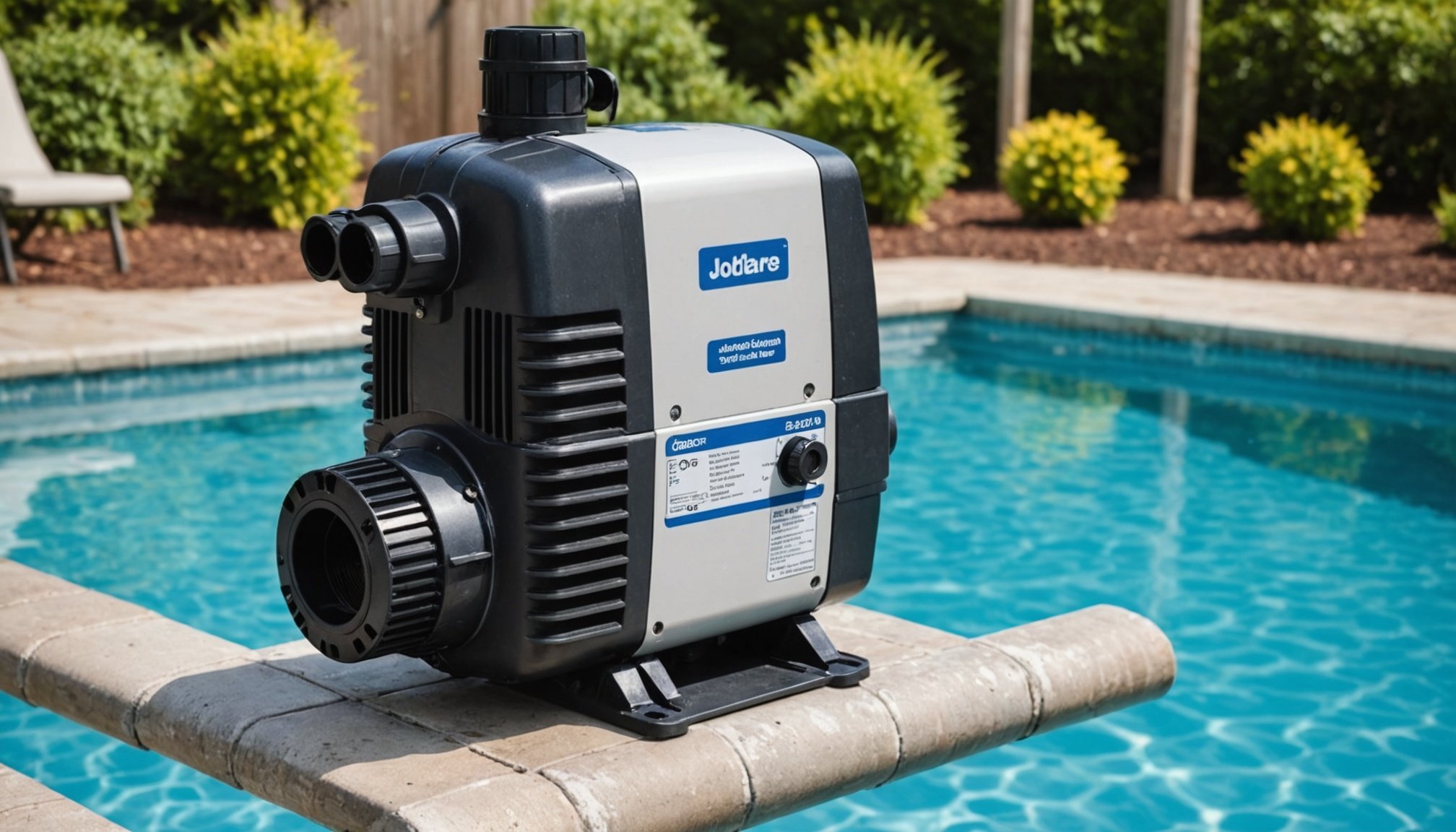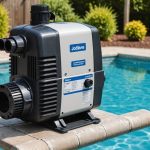Uncovering the Benefits of a Variable Speed Pump for Your UK Backyard Pool
When it comes to maintaining your UK backyard pool, one of the most critical components is the pool pump. Traditional single-speed pumps have been the norm for years, but with the advancement in technology, variable speed pumps have emerged as a game-changer. Here’s a detailed look at why you should consider upgrading to a variable speed pump for your swimming pool.
Understanding Variable Speed Pumps
Variable speed pumps are designed to operate at different speeds, adjusting to the specific needs of your pool. This flexibility is made possible by advanced technologies such as variable frequency drives (VFDs) and inverter-driven systems.
Also read : Mastering the art of choosing the most affordable pool cleaning service in the uk: your complete guide
How Variable Speed Pumps Work
Unlike single-speed pumps that run at full capacity all the time, variable speed pumps can adjust their speed to match the demand. For instance, during the night when the pool is not in use, the pump can run at a lower speed, saving energy. Here are some key features of how these pumps work:
- Precision Speed Control: Variable speed pumps allow for precise control over the motor speed, ensuring the pump operates at the required speed rather than full capacity. This reduces unnecessary power consumption, particularly in applications where full-speed operation isn’t needed[2].
- Minimized Start-Stop Cycles: Frequent motor starts and stops consume significant energy and increase wear and tear. With smooth acceleration and deceleration provided by a variable speed drive, energy spikes are minimized, improving overall efficiency[2].
- Load-Dependent Power Adjustment: The pump adjusts its output power based on the actual load, preventing it from running in a high-power state unnecessarily. This adaptability is key to saving energy in varying operational conditions[2].
Energy Efficiency and Cost Savings
One of the most compelling reasons to switch to a variable speed pump is the significant energy savings it offers.
In parallel : Crucial strategies to protect your uk swimming pool during long-term shutdowns
Energy-Saving Benefits
- Reduced Energy Consumption: By operating at lower speeds for longer periods, variable speed pumps consume less energy. For example, the Hayward TriStar VS 950 Omni pump can save up to 90% in energy costs compared to traditional single-speed pumps[5].
- Lower Utility Bills: With reduced energy consumption, you can expect a noticeable decrease in your utility bills. This is especially beneficial for pool owners who run their pumps for extended hours.
- Long-Term Savings: Over time, the savings from using a variable speed pump can be substantial, making it a worthwhile investment for your pool.
Enhanced Performance and Versatility
Variable speed pumps are not just about energy savings; they also offer enhanced performance and versatility.
Improved Flow Rates
- Adjustable Flow Rates: These pumps can be adjusted to provide the optimal flow rate for different tasks, such as cleaning, heating, or simply circulating the water. For instance, the Pentair 1.5HP SuperFlo VS pump is designed for small to medium-sized pools and offers excellent flow rates for efficient water circulation[3].
- Better Water Circulation: By adjusting the speed, you can ensure better water circulation, which is crucial for maintaining clean and safe pool water.
Quiet Operation and Reduced Noise
- Silent Mode: Many variable speed pumps come with a silent mode or reduced noise operation. For example, the HeatPro Variable-Speed Heat-Cool Pump features a silent mode for quiet and efficient operation, making it ideal for residential areas[1].
- Less Vibration: Lower motor speeds achieved through VFDs reduce mechanical vibration and noise, indirectly contributing to energy efficiency by minimizing mechanical strain[2].
Advanced Features and Convenience
Modern variable speed pumps come with a range of advanced features that enhance convenience and control.
Smart Control and Automation
- Omni Two-Way Communication: Pumps like the Hayward TriStar VS 950 Omni offer Omni two-way communication to automation systems, allowing you to control temperature and other pool functions from an app or even with voice assistants like Amazon Alexa[5].
- Advanced Touchscreen Interface: Many pumps feature advanced touchscreen interfaces, such as the 3.5” display on the HeatPro Variable-Speed Heat-Cool Pump, making it easy to adjust settings and monitor performance[1].
Installation and Maintenance
- Versatile Installation: Variable speed pumps often come with features like vertical discharge fans, which allow for versatile installation in any in-ground pool pad. This makes the installation process easier and more flexible[1].
- Durable Components: Pumps like the Hayward TriStar VS 950 Omni include permanent magnet, totally enclosed fan-cooled motors with EnduraDrive™ and Viton® seals, ensuring long-lasting performance and reliability[5].
Comparison with Single-Speed Pumps
To fully appreciate the benefits of variable speed pumps, it’s helpful to compare them with traditional single-speed pumps.
Key Differences
| Feature | Single-Speed Pumps | Variable Speed Pumps |
|---|---|---|
| Energy Efficiency | Generally less efficient | Highly efficient |
| Flow Rate | Fixed flow rate | Adjustable flow rate |
| Noise Levels | Often louder | Quieter operation |
| Cost | Lower upfront cost | Higher upfront cost, but long-term savings |
| Control | Limited control options | Advanced control options, including smart automation |
| Maintenance | More frequent maintenance | Less frequent maintenance |
Practical Insights and Actionable Advice
If you’re considering upgrading to a variable speed pump, here are some practical insights and actionable advice:
Assess Your Pool Needs
- Pool Size and Features: Determine the size of your pool and the presence of any water features. For example, if you have a small to medium-sized pool without extensive water features, a 1.5HP SuperFlo VS pump might be sufficient[3].
- Usage Patterns: Consider how often you use your pool and the times of day when it is most active. This will help you optimize the pump’s speed settings.
Choose the Right Pump
- Brand and Model: Research different brands and models, such as Hayward or Pentair, to find the one that best fits your needs. Look for features like AHRI certification, which ensures independent lab testing confirms product performance and value[1].
- Warranty and Support: Check the warranty and support offered by the manufacturer. For instance, Hayward offers 3+ year parts and labor warranties for their EXPERT LINE products[1].
Installation and Setup
- Professional Installation: While it might be tempting to install the pump yourself, it’s often best to hire a professional to ensure it is done correctly and safely.
- Smart Integration: If you opt for a pump with smart features, make sure to integrate it with your existing pool automation system for seamless control.
Upgrading to a variable speed pump is a smart decision for any pool owner looking to enhance energy efficiency, reduce costs, and improve overall pool performance. With their advanced features, adjustable flow rates, and quiet operation, these pumps offer a compelling alternative to traditional single-speed pumps.
Final Thoughts
In the words of a satisfied pool owner, “Switching to a variable speed pump has been a game-changer for my pool. Not only have I seen a significant reduction in my energy bills, but the pump is also much quieter and easier to control.”
By understanding the benefits and practical aspects of variable speed pumps, you can make an informed decision that will enhance your swimming pool experience and contribute to a more sustainable and cost-effective leisure setup. Whether you’re looking to save energy, reduce noise, or simply enjoy a more convenient pool management system, a variable speed pump is definitely worth considering for your UK backyard pool.





